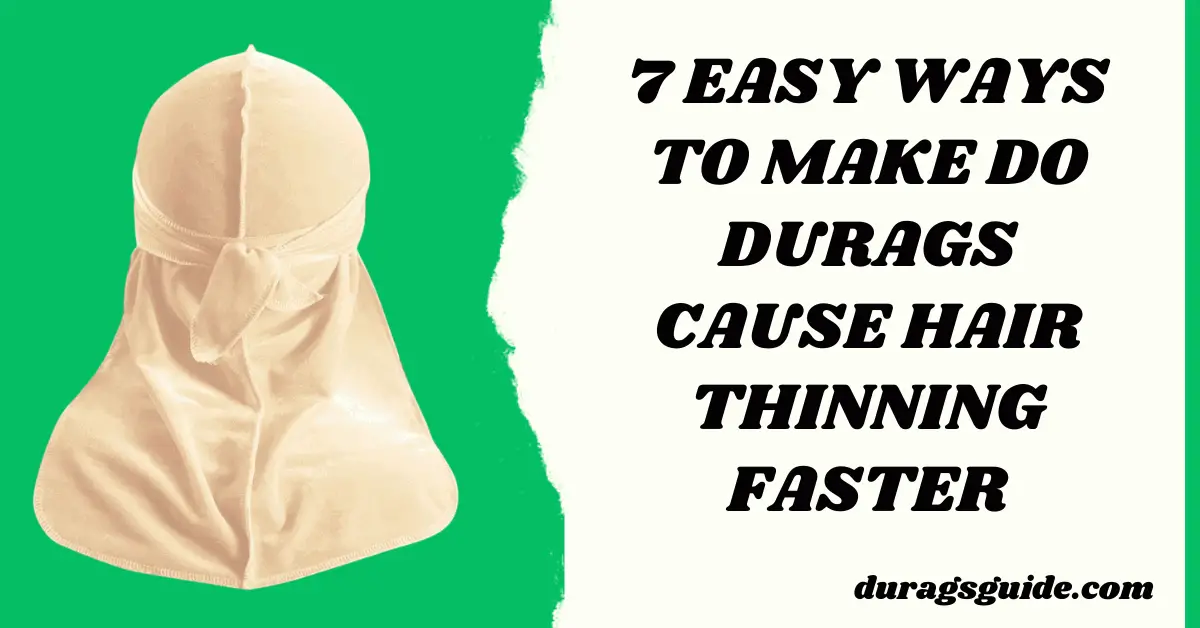Introduction
Curious about the effects of wearing durags on your hair health? Whether you’re a seasoned durag wearer or considering trying one out, understanding how durags may impact hair thinning is essential. In this article, we’ll explore 7 Easy Ways To Make Do Durags Cause Hair Thinning Faster while sporting your favorite durag styles. From debunking myths to practical tips, let’s delve into the nuances of maintaining hair health without compromising your signature look.
Understanding the Role of Durags in Hair Health
Wearing a durag is a common practice among individuals seeking to maintain waves, curls, or braids. However, the tightness and frequency of durag use can affect hair health, including the risk of hair thinning. To understand this better, let’s delve into the role of durags in hair care:
1.1. Protection During Sleep: Durags are often worn during sleep to protect hairstyles from frizz and maintain their shape. While this can be beneficial, prolonged compression from the durag’s fabric may restrict blood flow to the scalp, potentially contributing to hair thinning over time.
1.2. Style Retention: Durags are also worn to keep hairstyles in place throughout the day, especially after applying products or undergoing styling. While this can help maintain the desired look, excessive pressure from the durag may weaken hair follicles and lead to thinning or breakage.
1.3. Moisture Retention: Some individuals wear durags to lock in moisture after applying hair products or moisturizers. While moisture retention is crucial for hair health, wearing a durag for extended periods without allowing the scalp to breathe can create a humid environment conducive to bacterial growth and scalp issues.
1.4. Hair Growth Myths: There is a common misconception that wearing durags promotes hair growth. While durags can protect hair from external damage, they do not directly stimulate hair growth. Instead, factors like genetics, diet, and overall hair care practices play a more significant role in determining hair growth rates.
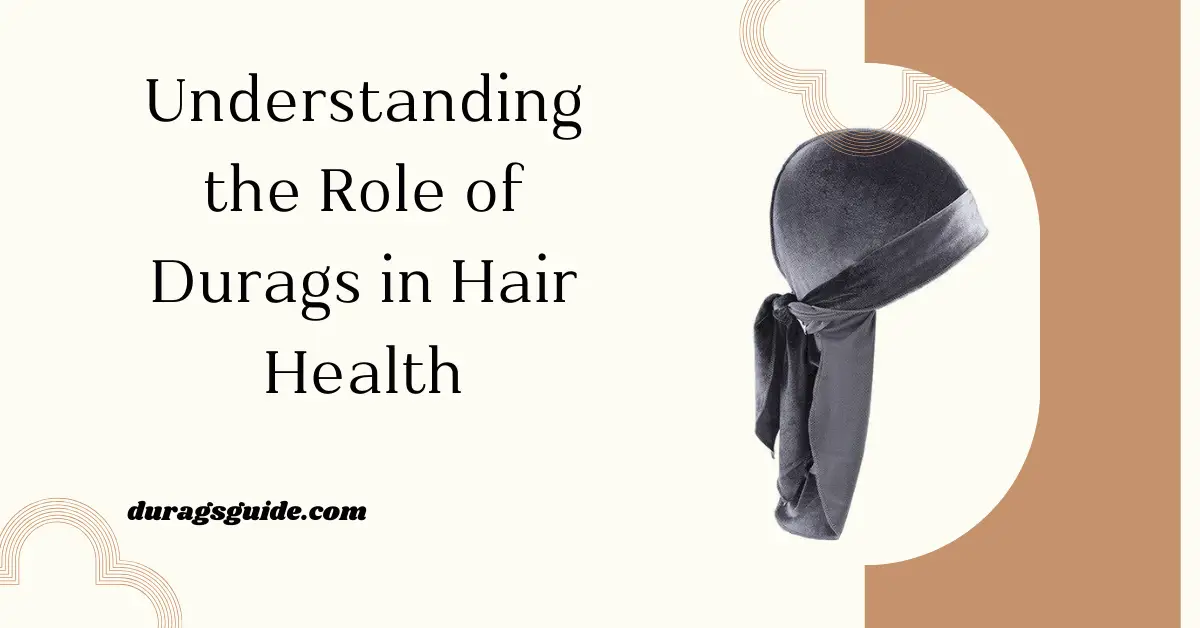
Factors Contributing to Hair Thinning from Durag Use
Hair thinning can result from various factors related to durag use. Understanding these factors is crucial for mitigating the risk of hair thinning and maintaining optimal hair health. Let’s explore some key contributors:
2.1. Tightness of Durag: Wearing a durag too tightly can exert excessive pressure on the scalp, leading to reduced blood circulation and potential damage to hair follicles. Consistently wearing a tightly tied durag can gradually weaken hair strands and contribute to thinning over time.
2.2. Duration of Wear: Prolonged or continuous wear of a durag without breaks can suffocate the scalp and trap heat and moisture, creating an environment conducive to scalp issues and hair thinning. It’s essential to allow the scalp to breathe periodically by removing the durag and giving the hair and scalp time to air out.
2.3. Fabric Friction: The friction between the durag fabric and the hair can lead to mechanical damage, especially if the fabric is rough or abrasive. Over time, this friction can weaken the hair shafts and result in breakage and thinning, particularly along the edges or where the durag rubs against the scalp.
2.4. Hair Product Buildup: Using hair products like gels, pomades, or oils under the durag can create a buildup on the scalp and hair strands. This buildup, combined with the compression from the durag, can clog hair follicles, inhibit hair growth, and contribute to hair thinning or even hair loss if left unchecked.
2.5. Traction Alopecia: Traction alopecia is a type of hair loss caused by prolonged tension or pulling on the hair follicles. Wearing durags too tightly or tying them in the same position repeatedly can exert constant traction on the hairline, leading to gradual hair thinning and recession.
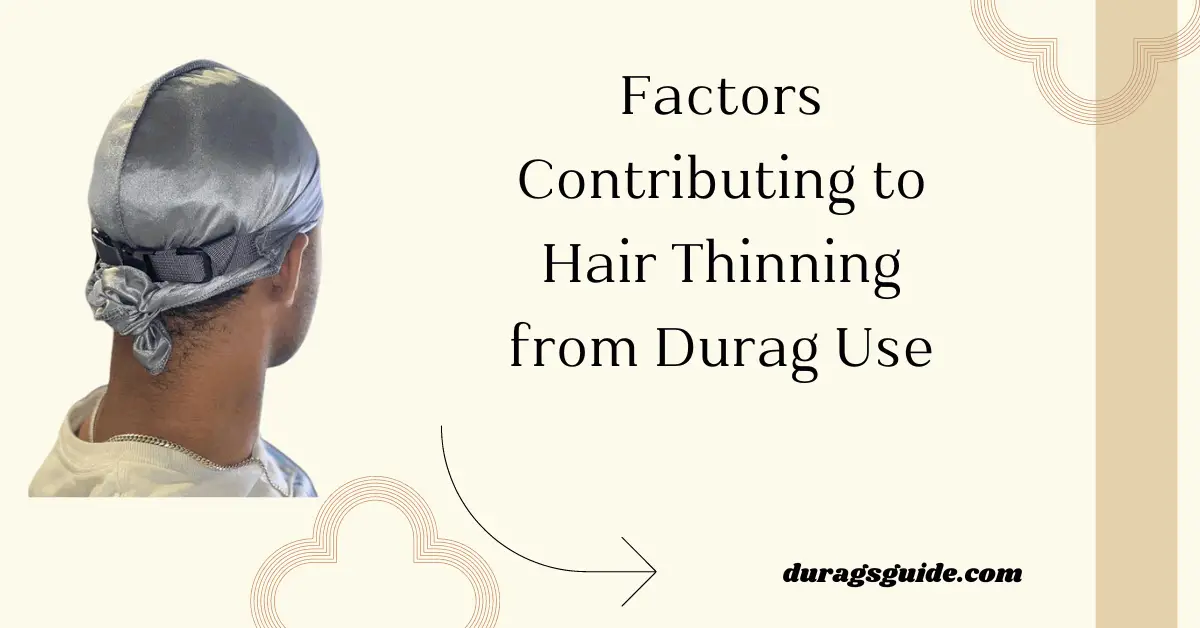
Preventive Measures and Hair Care Tips
To mitigate the risk of hair thinning caused by durag use, it’s essential to incorporate preventive measures and adopt proper hair care practices. Here are some tips to maintain healthy hair while wearing durags:
3.1. Choose the Right Fabric: Opt for durags made from smooth, breathable fabrics like silk or satin. These materials reduce friction and minimize damage to the hair shafts, preventing breakage and thinning.
3.2. Loosen Tension: Avoid tying the durag too tightly. Maintain a snug fit that holds the hair in place without exerting excessive pressure on the scalp. Loosening the durag can improve blood circulation to the scalp and reduce the risk of hair thinning.
3.3. Limit Durag Wear: Refrain from wearing a durag for extended periods without breaks. Allow your scalp and hair to breathe by removing the durag periodically, especially before bedtime or during activities that don’t require its use.
3.4. Practice Good Scalp Hygiene: Keep your scalp clean and free from product buildup by washing it regularly with a mild shampoo. Avoid using heavy styling products that can weigh down the hair and contribute to scalp issues.
3.5. Massage the Scalp: Stimulate blood flow to the scalp by gently massaging it with your fingertips. This promotes hair growth and strengthens the hair follicles, reducing the risk of thinning and promoting overall hair health.
3.6. Protect the Hairline: Pay attention to the edges and hairline when tying the durag. Avoid pulling or tugging on these areas to prevent traction alopecia. Use a softer fabric or padding to cushion the edges and minimize friction.
3.7. Moisturize and Condition: Keep your hair hydrated and nourished by using a moisturizing conditioner or hair oil. This helps prevent dryness, brittleness, and breakage, ensuring that your hair remains healthy and resilient.
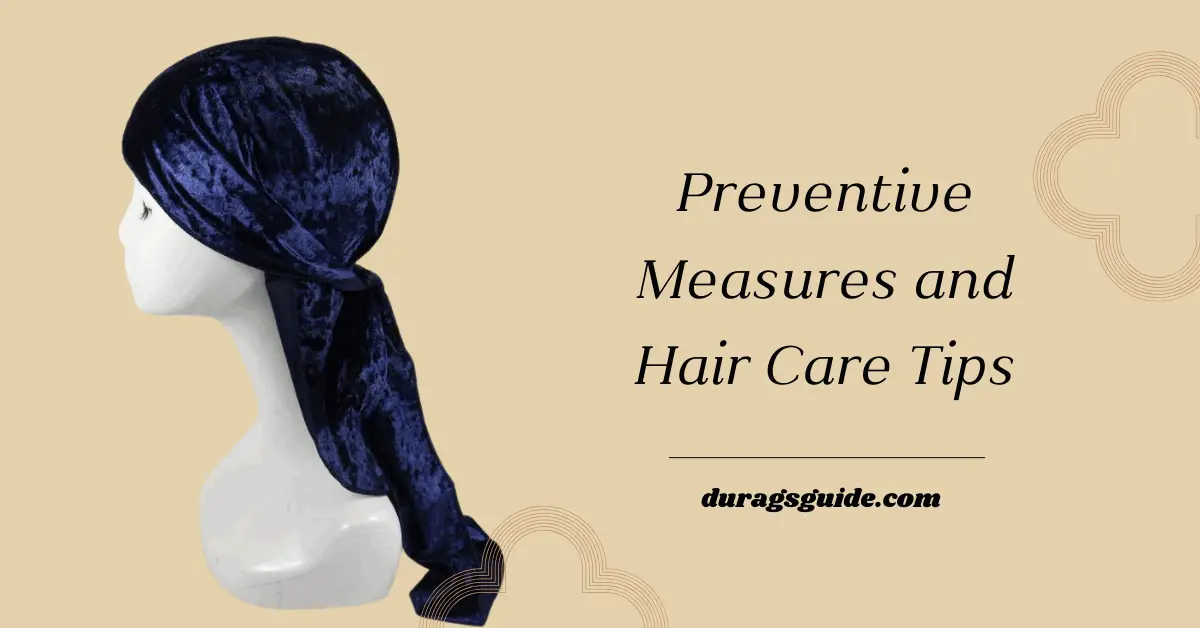
Preventive Measures
To mitigate the risk of hair thinning while wearing durags, it’s essential to adopt preventive measures and practices. Here are some effective strategies to consider:
4.1. Opt for High-Quality Durags: Investing in high-quality durags made from soft, breathable fabrics like silk or satin can minimize friction and reduce the likelihood of hair damage. These materials are gentler on the hair and less likely to cause breakage or thinning.
4.2. Avoid Tight Tying: Tying the durag too tightly can exert excessive pressure on the hair follicles and scalp, leading to hair thinning and traction alopecia. Ensure that your durag is snug but not overly tight to prevent unnecessary tension and strain on your hair.
4.3. Practice Proper Scalp Hygiene: Maintaining good scalp hygiene is essential for preserving hair health. Regularly cleanse your scalp to remove dirt, oil, and product buildup, which can clog hair follicles and contribute to hair thinning. Use a gentle shampoo and conditioner suitable for your hair type.
4.4. Limit Durag Wear: While durags can be a convenient and stylish accessory, it’s important not to rely on them excessively. Limit the duration of durag wear, especially during periods of extended use or overnight. Allowing your scalp and hair to breathe freely without the constraint of a durag can promote better circulation and hair growth.
4.5. Protect Your Hair at Night: If you prefer to wear a durag while sleeping to maintain your hairstyle, consider opting for a silk or satin durag. These materials are less likely to cause friction and breakage compared to traditional cotton durags. Additionally, use a satin or silk pillowcase to further minimize friction and protect your hair while you sleep.
Proper Hair Care Routine
Adopting a proper hair care routine is essential for maintaining the health and integrity of your hair while wearing durags. Here are some key steps to include in your routine:
5.1. Gentle Washing: Wash your hair regularly with a mild shampoo and lukewarm water to remove dirt, oil, and product buildup. Avoid using hot water, as it can strip the hair of its natural oils and lead to dryness and breakage.
5.2. Conditioning: Apply a moisturizing conditioner to your hair after shampooing to replenish moisture and improve manageability. Focus on the lengths and ends of your hair, avoiding the scalp to prevent excess oiliness.
5.3. Detangling: Use a wide-tooth comb or your fingers to gently detangle your hair, starting from the ends and working your way up to the roots. Avoid aggressive brushing or combing, especially while your hair is wet, as it can cause breakage and damage.
5.4. Moisturizing: Keep your hair well-hydrated by regularly moisturizing it with a leave-in conditioner or hair oil. Focus on the ends of your hair, which tend to be drier, and avoid applying too much product to the scalp, as it can weigh down the hair and lead to greasiness.
5.5. Protective Styling: Consider incorporating protective styles into your hair care routine, such as braids, twists, or buns, to minimize manipulation and protect your hair from environmental damage. These styles can also help prevent tangling and breakage while wearing durags.
5.6. Trimming: Regularly trim your hair to remove split ends and prevent further damage. Aim to trim your hair every 6-8 weeks or as needed to maintain its health and vitality. Durag Material
When choosing a durag, the material it’s made from can significantly impact its effectiveness and comfort. Here are some key material considerations to keep in mind:
6.1. Silk: Silk durags are popular for their smooth texture and ability to retain moisture in the hair. They are gentle on the hair and scalp, reducing friction and preventing breakage. Silk durags are ideal for those with sensitive scalp or hair prone to dryness.
6.2. Satin: Satin durags offer similar benefits to silk, providing a smooth surface that minimizes friction and helps retain moisture in the hair. Satin durags are often more affordable than silk and come in a variety of colors and designs.
6.3. Velvet: Velvet durags have a luxurious feel and provide excellent compression to lay down the hair smoothly. They are ideal for achieving sleek styles and can add a touch of elegance to your look. However, velvet durags may not be as breathable as silk or satin options.
6.4. Polyester: Polyester durags are durable and easy to clean, making them a practical choice for everyday wear. They are often more affordable than silk or satin durags but may not offer the same level of comfort or moisture retention.
6.5. Spandex: Spandex durags are stretchy and form-fitting, allowing for a snug and secure fit. They are often blended with other materials like silk or satin to provide additional comfort and flexibility. Spandex durags are ideal for those who prefer a tighter fit or need extra compression.
6.6. Cotton: Cotton durags are breathable and lightweight, making them suitable for warmer weather or intense physical activity. They may not provide as much compression as other materials but offer excellent moisture-wicking properties to keep the scalp dry and comfortable.

Choosing the Right Durag Color and Style
Selecting the perfect color and style of durag can enhance your overall look and complement your personal style. Here are some factors to consider when choosing the right durag color and style:
7.1. Skin Tone: Consider your skin tone when selecting the color of your durag. Choose colors that complement your complexion and enhance your natural features. For example, individuals with warm undertones may opt for earthy tones like brown or gold, while those with cooler undertones may prefer shades like blue or purple.
7.2. Hair Color: Your hair color can also influence the choice of durag color. Select a durag color that contrasts with your hair color to create visual interest and highlight your hair. For example, individuals with dark hair may choose lighter-colored durags like white or silver, while those with light hair may opt for darker hues like black or navy.
7.3. Occasion: Consider the occasion or setting where you’ll be wearing the durag. For casual settings, you can choose bold and vibrant colors or eye-catching patterns to make a statement. For more formal occasions, opt for neutral colors or classic patterns like stripes or plaids for a sophisticated look.
7.4. Personal Style: Your personal style plays a significant role in selecting the right durag. Choose a style that reflects your personality and complements your wardrobe. Whether you prefer bold and colorful durags or subtle and understated designs, there are endless options to suit your taste.
7.5. Material and Texture: The material and texture of the durag can also influence its appearance. Silk and satin durags have a smooth and shiny finish, adding a touch of elegance to your look. Velvet durags have a luxurious texture and can elevate your style. Consider the material and texture that best align with your aesthetic preferences.
7.6. Experimentation: Don’t be afraid to experiment with different colors and styles to find what works best for you. Mix and match durags with your outfits and accessories to create unique and versatile looks. Have fun exploring different color combinations and patterns to express your individuality.
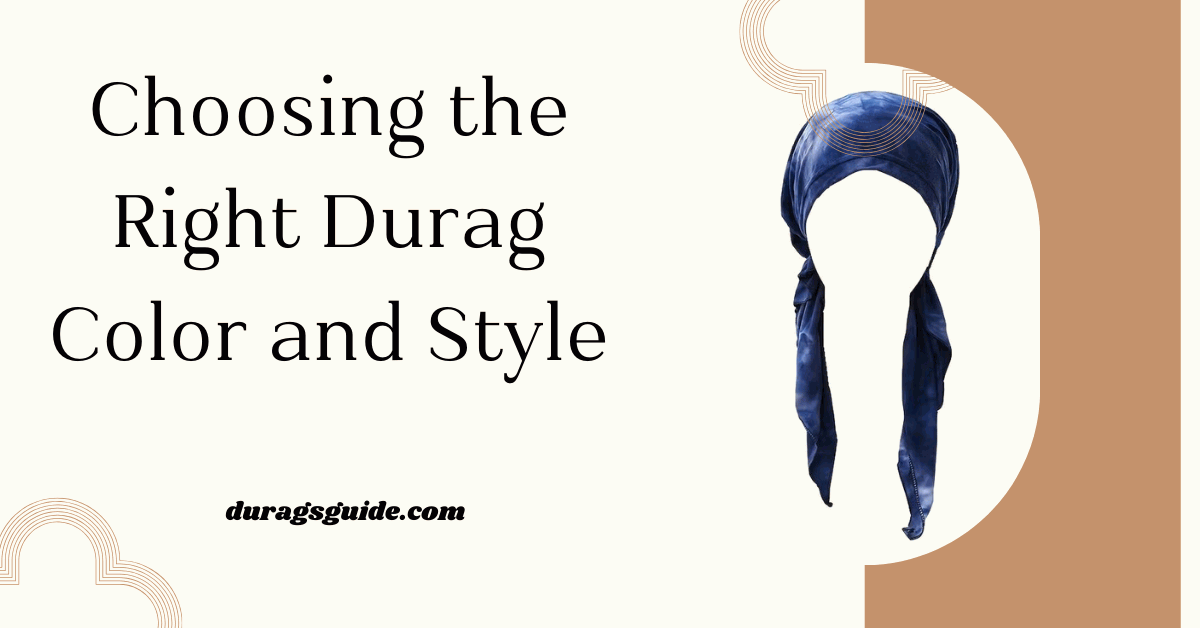
Maintaining Your Durag Collection
Once you’ve built up your collection of durags, it’s important to maintain them properly to ensure they remain in good condition and last longer. Here are some tips for maintaining your durag collection:
8.1. Regular Washing: Durags can accumulate dirt, oil, and sweat over time, so it’s essential to wash them regularly. Follow the care instructions provided by the manufacturer or hand wash your durags in lukewarm water with mild detergent. Avoid using harsh chemicals or bleach, as they can damage the fabric.
8.2. Air Drying: After washing your durags, avoid using a dryer as the heat can cause shrinkage and damage the fabric. Instead, gently squeeze out excess water and lay the durags flat to air dry. Avoid wringing or twisting the durags, as this can distort their shape.
8.3. Ironing: If your durags become wrinkled after washing, you can iron them on a low heat setting to smooth out any creases. Use a pressing cloth or a clean towel to protect the fabric from direct heat and prevent damage. Be sure to iron the durags on the reverse side to avoid leaving shiny marks on the fabric.
8.4. Storage: Proper storage is essential for maintaining the shape and integrity of your durag collection. Store them in a clean, dry place away from direct sunlight to prevent fading and discoloration. You can roll or fold your durags neatly and store them in a drawer or a designated storage box.
8.5. Rotation: To prevent excessive wear and tear on your durags, rotate them regularly and avoid wearing the same durag every day. This allows each durag to rest and recover between wears, prolonging its lifespan and keeping it looking fresh.
8.6. Repairing: If you notice any tears, loose threads, or other damage to your durags, take the time to repair them promptly. Use a needle and thread to sew any seams that have come undone or patch up any holes or tears. Regular maintenance and repairs can help extend the life of your durags and keep them looking their best.

Durag Styling Tips
Once you have your durag collection, it’s time to experiment with different styles to achieve the look you desire. Here are some durag styling tips to help you elevate your fashion game:
9.1. Color Coordination: Coordinate your durag with your outfit or accessories for a cohesive look. Choose complementary colors or opt for bold contrasts to make a statement. Experiment with different color combinations to find what works best for you.
9.2. Tie Styles: Explore various tie styles to change up your look. From the classic two-tie method to the wave cap style, there are plenty of options to choose from. Watch tutorials or experiment with different techniques to find your signature tie style.
9.3. Accessories: Elevate your durag look with accessories such as chains, earrings, or sunglasses. Add a touch of bling or opt for subtle accents to enhance your overall style. Experiment with different accessories to add personality to your durag ensemble.
9.4. Patterns and Prints: Embrace patterns and prints to add visual interest to your durag look. From paisley and camo to floral and geometric prints, there are endless options to choose from. Mix and match patterns or keep it simple with a solid color durag paired with printed clothing.
9.5. Durag Placement: Experiment with different placements for your durag to achieve different effects. Wear it low for a casual vibe or high for a more polished look. You can also tilt your durag to the side for a trendy twist or keep it straight for a classic appearance.
9.6. Fabric Selection: Choose durags made from different fabrics to suit your style and preferences. Silk durags offer a luxurious feel and a sleek finish, while velvet durags provide a soft texture and a touch of elegance. Experiment with different fabrics to find the one that feels most comfortable and looks best on you.
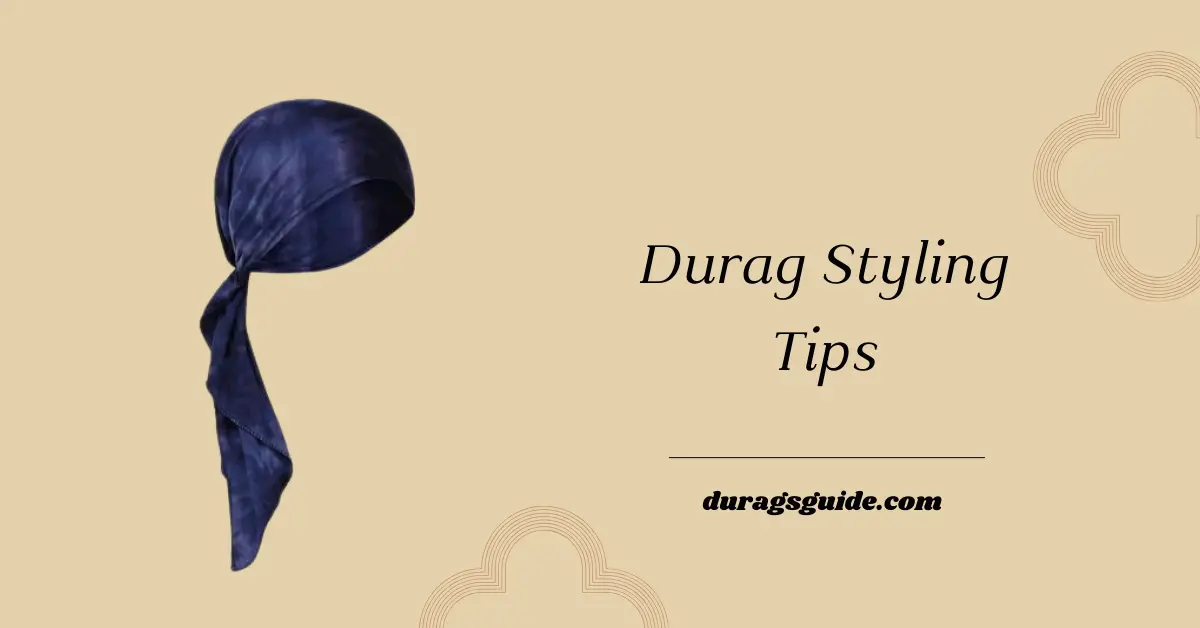
Durag Maintenance
Maintaining your durags is essential to ensure they remain in good condition and continue to enhance your style. Here are some tips for keeping your durags clean and well-maintained:
10.1. Regular Washing: It’s important to wash your durags regularly to remove dirt, oils, and product buildup. Follow the care instructions on the label or opt for hand washing with a mild detergent. Avoid using harsh chemicals or bleach, as they can damage the fabric.
10.2. Gentle Handling: When washing your durags, handle them gently to prevent stretching or damage to the fabric. Avoid wringing or twisting the durags too vigorously, as this can distort their shape. Instead, gently squeeze out excess water and lay them flat to dry.
10.3. Air Drying: Allow your durags to air dry naturally after washing to preserve their shape and texture. Avoid using a dryer, as high heat can cause shrinkage or damage to delicate fabrics like silk or velvet. Hang your durags in a well-ventilated area away from direct sunlight to dry thoroughly.
10.4. Storage: Store your durags properly when not in use to prevent wrinkles or creases. Avoid folding them tightly, as this can cause permanent creases in the fabric. Instead, roll your durags loosely and place them in a clean, dry drawer or storage box.
10.5. Ironing: If your durags become wrinkled, you can iron them on a low heat setting to smooth out the fabric. Use a pressing cloth or a thin towel to protect delicate fabrics like silk or velvet from direct heat. Avoid ironing over any embellishments or prints on the durag.
10.6. Repairing Tears or Snags: Check your durags regularly for any tears or snags and repair them promptly to prevent further damage. Use a needle and thread to stitch up any small tears, or apply a fabric patch for larger holes. Be gentle when handling delicate fabrics to avoid causing additional damage.
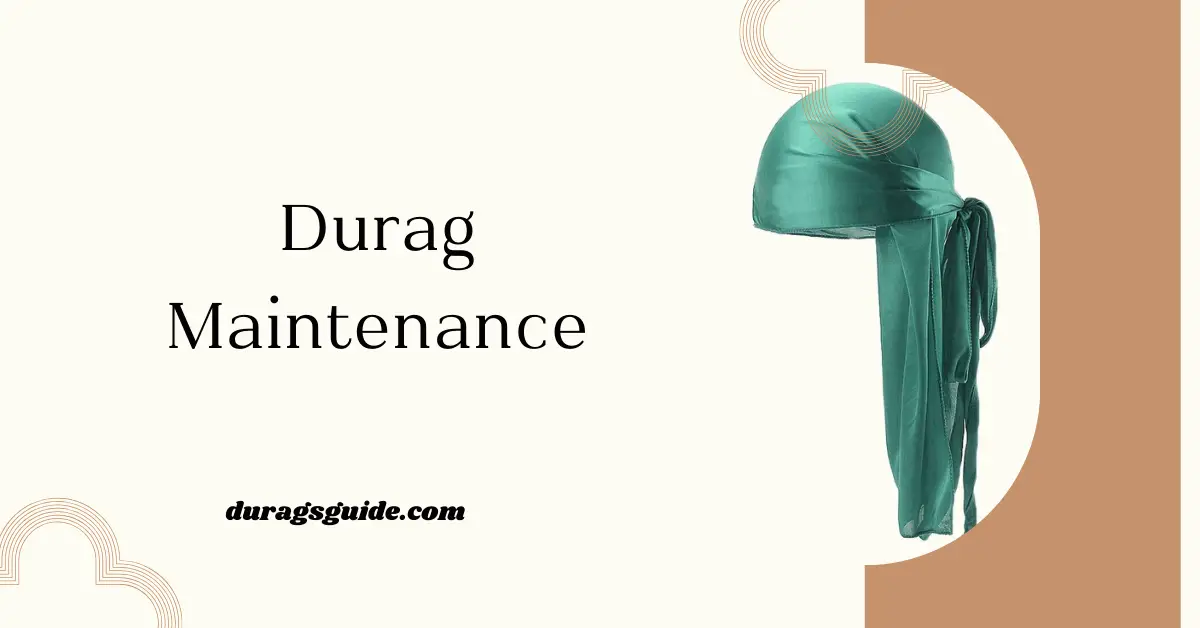
7 Easy Ways To Make Do Durags Cause Hair Thinning Faster
| Easy Ways to Prevent Durags from Causing Hair Thinning |
| 1. Choose the Right Material |
| Opt for durags made from soft, breathable fabrics like silk or satin to minimize friction and prevent hair breakage. |
| 2. Avoid Tying Too Tight |
| Loosen your durag to reduce tension on your hairline, preventing it from pulling and causing hair thinning. |
| 3. Limit Durag Use |
| Avoid wearing your durag for extended periods to give your hair a break and prevent excessive pressure on your scalp. |
| 4. Use a Satin-Lined Durag |
| Invest in a durag with a satin lining to protect your hair from friction and minimize the risk of hair thinning. |
| 5. Maintain Good Hair Hygiene |
| Keep your hair and scalp clean and moisturized to promote healthy hair growth and minimize the risk of thinning. |
| 6. Opt for Looser Styles |
| Choose durag styles that are loose-fitting and comfortable to prevent tightness and reduce the risk of hair thinning. |
| 7. Rotate Durag Styles |
| Alternate between different durag styles and materials to minimize repetitive stress on your hair and scalp. |
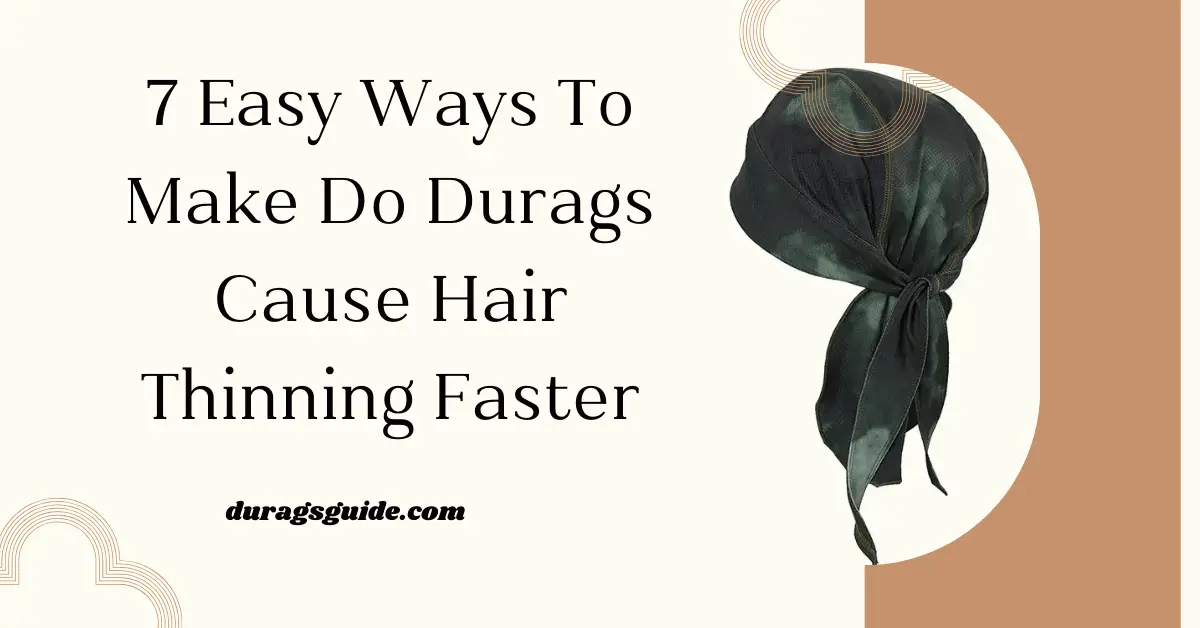
7 Easy Ways To Make Do Durags Cause Hair Thinning Faster write pros and cons
| Pros | Cons |
| 1. Easy to Implement | 1. May Not Work for Everyone |
| 2. Cost-Effective | 2. Requires Consistency |
| 3. Minimal Effort Required | 3. Results May Take Time |
| 4. Can Be Incorporated into Daily Routine | 4. May Require Trial and Error |
| 5. May Help Prevent Hair Thinning if Effective | 5. Potential Side Effects such as Dryness or Scalp Irritation |
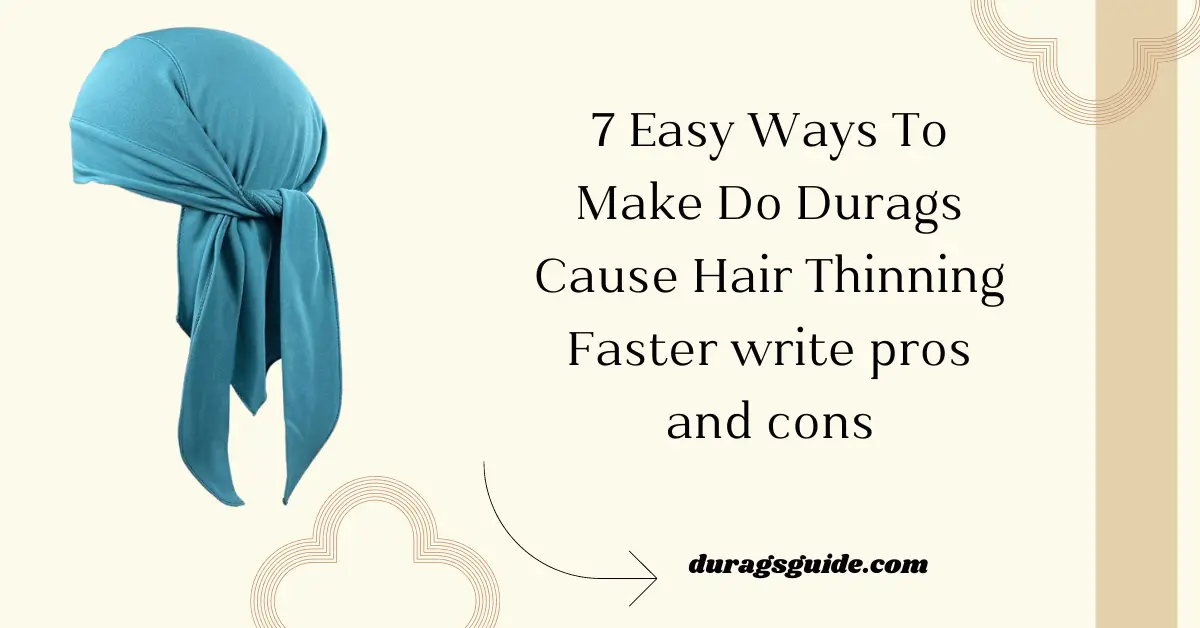
Some expert view about durags
While durags can be a stylish accessory and provide benefits like protecting hair from friction and retaining moisture, it’s essential to use them judiciously to avoid potential hair thinning. Constant pressure and friction from tightly tied durags can lead to traction alopecia, a form of hair loss caused by repeated pulling on the hair follicles. Additionally, wearing durags for extended periods without allowing the scalp to breathe can create a warm, moist environment conducive to bacterial growth, potentially leading to scalp issues and hair thinning.
Experts advise individuals to be mindful of how tightly they tie their durags and to avoid wearing them for prolonged periods, especially during sleep. It’s also crucial to regularly wash and moisturize the scalp and hair to prevent buildup and maintain healthy follicles. Furthermore, rotating durag materials and styles can help distribute pressure more evenly across the scalp, reducing the risk of hair thinning in specific areas.
Ultimately, while durags can be a valuable tool in hair care and styling, it’s essential to use them responsibly and prioritize scalp and hair health above all else. Consulting with a dermatologist or trichologist can provide personalized recommendations for maintaining a healthy scalp and preventing hair thinning associated with durag use.
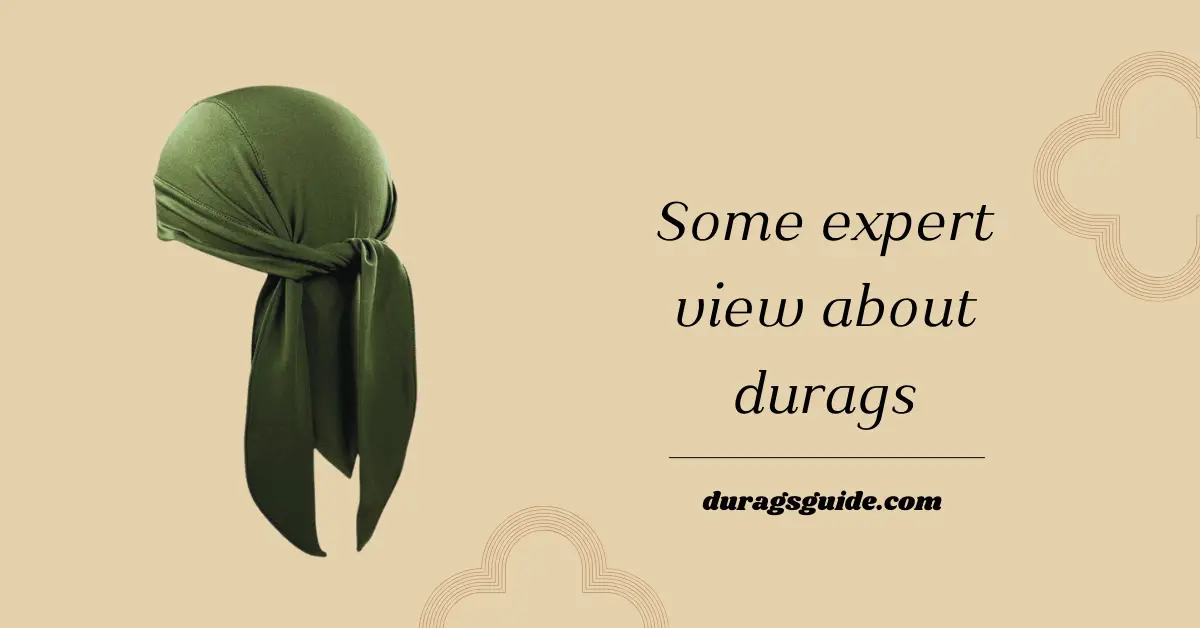
Final thoughts
In conclusion, while there are several methods purported to accelerate hair thinning while wearing durags, it’s essential to approach them with caution. The pros and cons must be carefully weighed, considering factors like individual hair type, scalp health, and personal preferences. Experimenting with different techniques may yield varying results, and what works for one person may not work for another. It’s crucial to prioritize scalp and hair health above all else and consult with a healthcare professional if experiencing any adverse effects. Ultimately, maintaining a balanced approach to durag use and hair care practices is key to achieving desired results while minimizing potential risks.
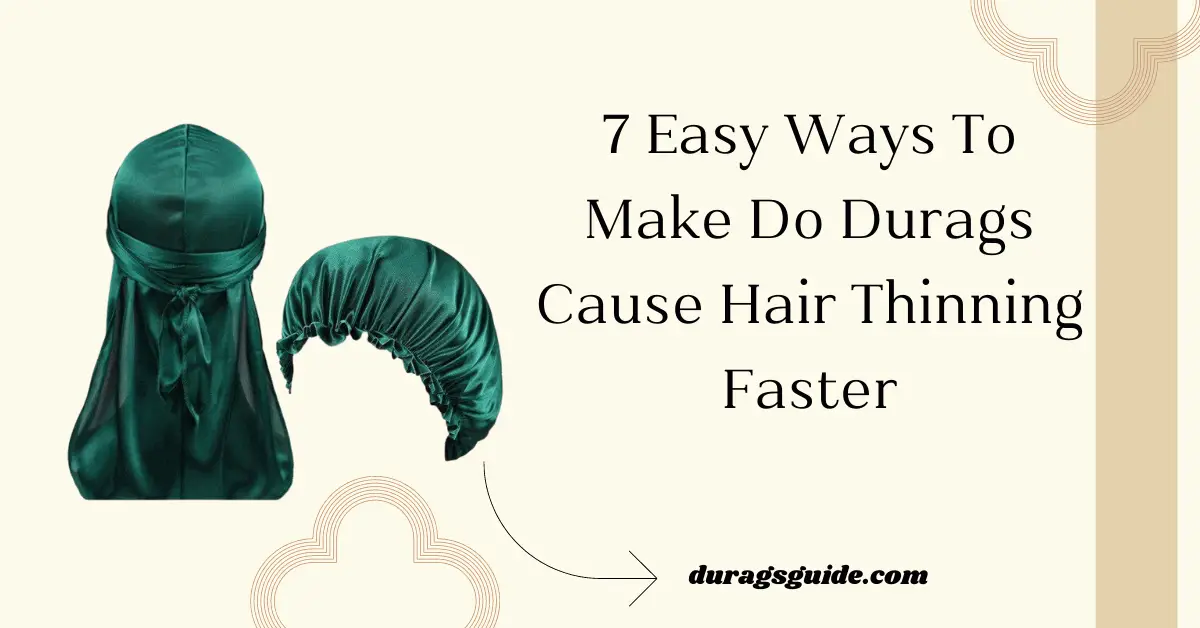
FAQS
Can a durag thin your hair?
Wearing durags too tightly or for extended periods can exert pressure on the hair follicles, leading to a condition called traction alopecia, which can cause hair thinning or loss over time. It's essential to use durags responsibly and avoid excessive tension to prevent this potential issue.
What accelerates hair thinning?
Hair thinning can be accelerated by various factors such as genetics, hormonal changes, certain medications, medical conditions like thyroid disorders, stress, poor nutrition, and styling practices that cause damage or tension to the hair follicles, such as wearing durags too tightly.
Does a durag make your hair flat?
Yes, wearing a durag can cause your hair to appear flat because it presses the hair down against the scalp, reducing volume and texture. However, this effect may vary depending on the tightness of the durag and the individual's hair type.
What happens if I wear a durag too much?
Wearing a durag excessively can lead to several issues, including potential hair breakage, scalp irritation, and discomfort due to prolonged compression. It's important to give your hair and scalp regular breaks from wearing a durag to prevent these problems.
What happens if I wear a durag too much?
Wearing a durag excessively can lead to hair breakage, scalp irritation, and discomfort due to prolonged compression. It's essential to allow your hair and scalp to breathe by giving them regular breaks from wearing a durag.
Why is my hair so thin?
Hair thinning can be attributed to a variety of factors including genetics, hormonal imbalances, stress, nutritional deficiencies, and certain medical conditions like alopecia. Consulting a healthcare professional can help diagnose the root cause and explore treatment options.
